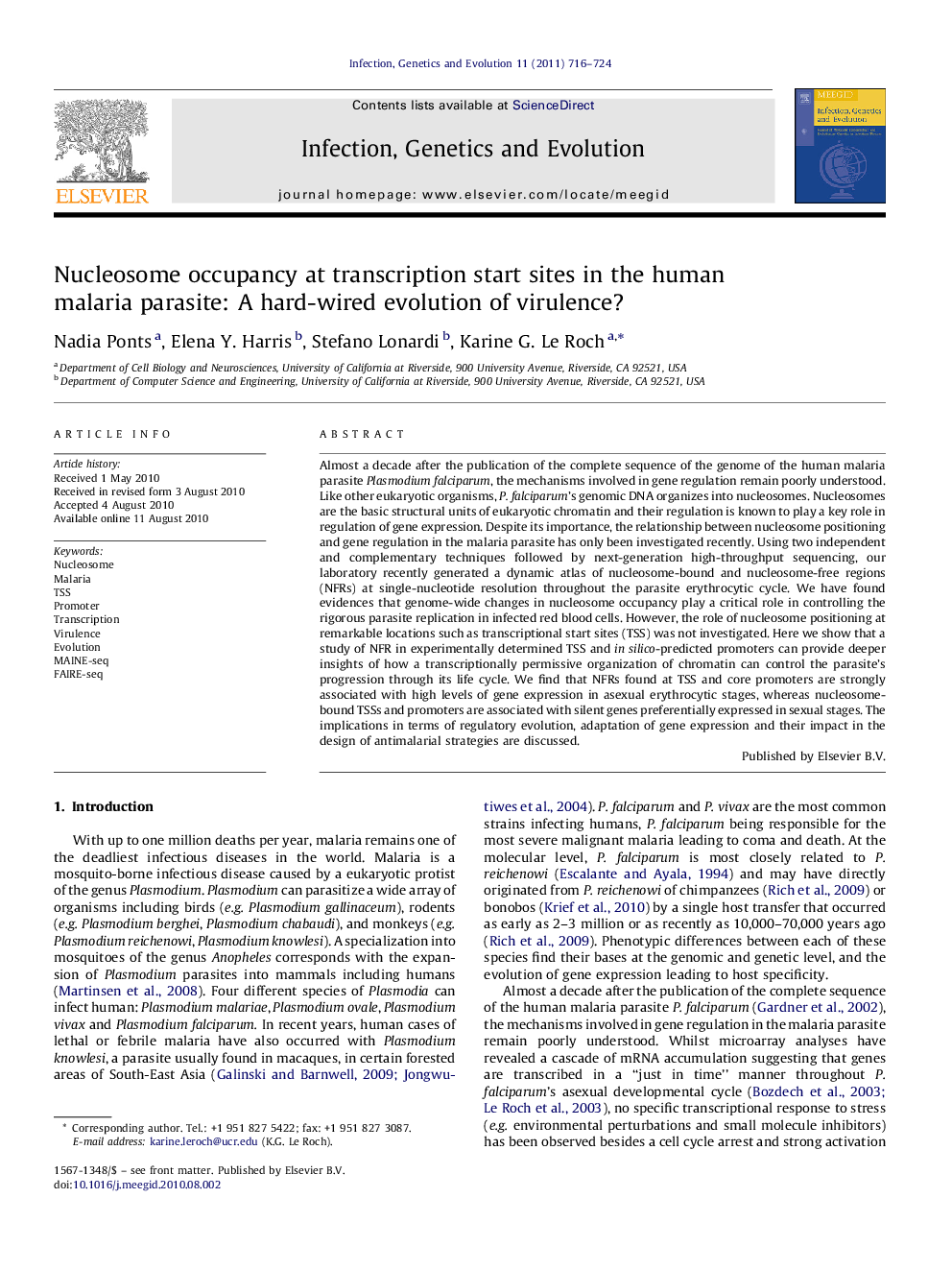| کد مقاله | کد نشریه | سال انتشار | مقاله انگلیسی | نسخه تمام متن |
|---|---|---|---|---|
| 2823152 | 1161375 | 2011 | 9 صفحه PDF | دانلود رایگان |

Almost a decade after the publication of the complete sequence of the genome of the human malaria parasite Plasmodium falciparum, the mechanisms involved in gene regulation remain poorly understood. Like other eukaryotic organisms, P. falciparum's genomic DNA organizes into nucleosomes. Nucleosomes are the basic structural units of eukaryotic chromatin and their regulation is known to play a key role in regulation of gene expression. Despite its importance, the relationship between nucleosome positioning and gene regulation in the malaria parasite has only been investigated recently. Using two independent and complementary techniques followed by next-generation high-throughput sequencing, our laboratory recently generated a dynamic atlas of nucleosome-bound and nucleosome-free regions (NFRs) at single-nucleotide resolution throughout the parasite erythrocytic cycle. We have found evidences that genome-wide changes in nucleosome occupancy play a critical role in controlling the rigorous parasite replication in infected red blood cells. However, the role of nucleosome positioning at remarkable locations such as transcriptional start sites (TSS) was not investigated. Here we show that a study of NFR in experimentally determined TSS and in silico-predicted promoters can provide deeper insights of how a transcriptionally permissive organization of chromatin can control the parasite's progression through its life cycle. We find that NFRs found at TSS and core promoters are strongly associated with high levels of gene expression in asexual erythrocytic stages, whereas nucleosome-bound TSSs and promoters are associated with silent genes preferentially expressed in sexual stages. The implications in terms of regulatory evolution, adaptation of gene expression and their impact in the design of antimalarial strategies are discussed.
Journal: Infection, Genetics and Evolution - Volume 11, Issue 4, June 2011, Pages 716–724